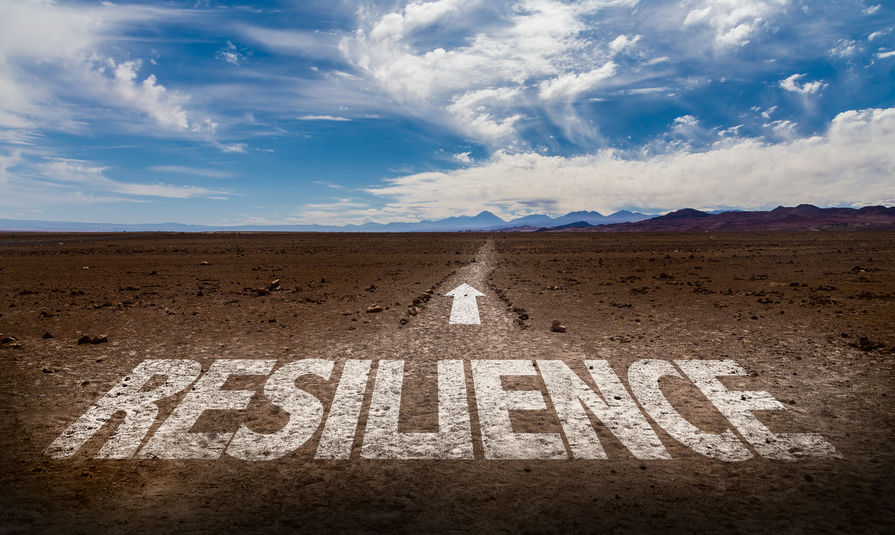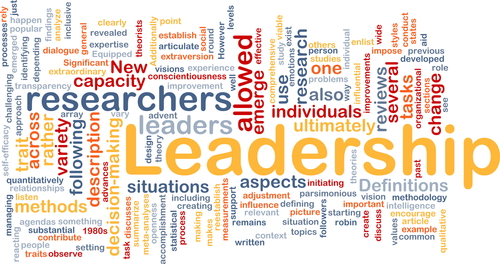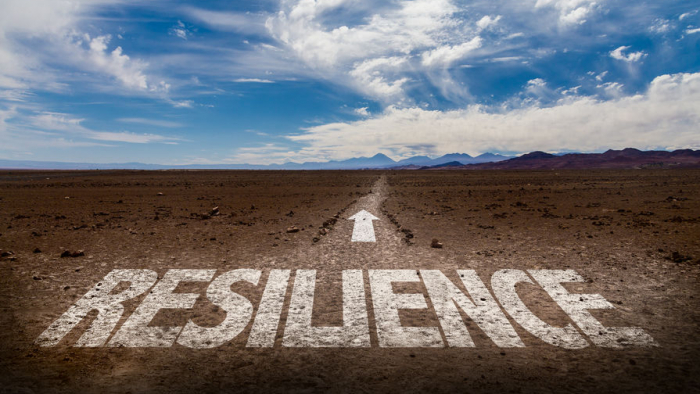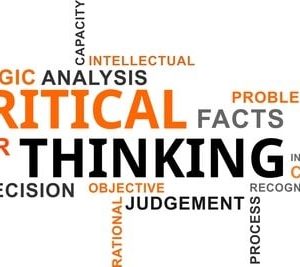RESEARCH STUDY

ABSTRACT
The study sought to evaluate the resilience profile, the predominant leadership styles, the leadership effectiveness, and the relationship between the resilience factor and leadership effectiveness of a group of executives. In order to evaluate the resilience profile a closed instrument of Likert type has been developed and applied. To identify the predominant leadership styles, as well as the leadership effectiveness of the involved executives, it has been used an instrument available in the market. To verify the relationship between resilience factor and leadership effectiveness, it has been used the linear regression method computing the linear correlation coefficient between the before mentioned variables, involving 100 executives. The study has shown that the executives have a moderate resilience level in their resilience profile, with predominance of self-efficacy and reaching out. Additionally the study has uncovered lack of flexibility regarding the leadership styles, presenting styles of selling and sharing ideas as dominants. The study also showed that the leadership effectiveness of the involved executives was at a moderate level. Finally, the research pointed out a high positive relationship between executives resilience factor and leadership effectiveness.
Key words: resilience, resilience factor, leadership, leadership styles, and leadership effectiveness.

INTRODUCTION
Resilience
How many times in the last week have you said to yourself, “I can’t take this stress anymore,” or “Why do I keep overreacting to such little things”or even “Is this all there is to life?”
What you need is more resilience—the ability to persevere and adapt when things go awry.
Everyone needs resilience, because one thing is certain, life includes adversities. If you increase your resilience, you can overcome most of what life puts in your way.
Research shows that most people consider themselves to be fairly resilient. But the reality is that most of us aren’t emotionally or psychologically prepared to handle adversity, which means that instead of facing our problems bravely and confidently, we risk giving up and feeling helpless.
Resilience is of vital importance when making quick and tough decisions in moments of chaos. What’s more, it grants you the ability to do so with grace, humor, and optimism.
Resilience transforms. It transforms hardship into challenge, failure into success, and helplessness into power. Resilience turns victims into survivors and allows survivors to thrive. Resilient people are loath to allow even major setbacks to push them from their life course.
Increasing resilience will require work on your part, and it will require energy and commitment.
Many of the challenges faced by leaders generally are similar to those experienced by police officers. The isolation experienced in Leadership roles; the pressure not to show emotion; dealing with confused, frustrated and angry people; and delivering bad news, all contribute to the pressures on leaders everywhere (Smith and Charles, 2013).
Researches have developed a set of skills to help people from all walks of life achieve their goals by enhancing their capacity for resilience (Reivich and Shatte, 2002), as depicted in Table 1.
These skills promote resilience, leading people to solve their own problems, take appropriate risks, and accurately forecast the implications of an adversity.
Their research has demonstrated that the number-one roadblock to resilience is not genetics, not childhood experiences, not a lack of opportunity or wealth. The principal obstacle to tapping into our inner strength lies with our cognitive style, which is referred to in this book as thinking style—ways of looking at the world and interpreting events that every one of us develops from childhood.

You can increase your resilience by learning to understand your thinking styles and developing skills to circumvent them so that you can assess the true causes of adversity and its effect on your life. And it is resilience that will help you achieve your goals.
Table 1
Seven Resilience Factors
| Factor 1: Emotion Regulation Knowing and wanting to self-perceive and neutralize impulsive emotions that hinder tranquility, patience, serenity and thoughtfulness, ensuring that these prevail in facing adversity and interpersonal objections, facilitating lucid, logical and conciliatory solutions to problems. | ||
| Factor 2: Impulse Control Know and want to understand what is happening, to judge with thought and logic, avoiding conclusions and hasty actions. | ||
| Factor 3: Optimism Knowing and wanting to make the choice for thoughts and behavior guided by faith and the hope that things will inevitably improve. | ||
| Factor 4: Causal Analysis Know and want to make the previous and correct identification of the cause of a problem, finding solutions for quick correction and prevention. | |
| Factor 5: Empathy Knowing and wanting to understand what happens to the other, imagining himself to be that other in that situation, with the same views and feelings as him. | |
| Factor 6: Self-Efficacy Know and want to lead yourself, making a self-control capable of identifying and making any and all adaptive behavioral changes, necessary to achieve the intended results. | |
| Factor 7: Reaching Out (Achievement Motivation) Knowing and wanting to concentrate mentally and emotionally in the pursuit of challenging but attainable goals, without fading in the face of criticism and deviating from the focus. |
Source: Adapted from Reivich and Shatte

The Importance of Resilience
1. Stress is actually a good thing; it stimulates us and motivates us to meet the challenges that we face. One consequence of stress is anxiety, and anxiety in manageable doses is a great motivator.
2. Stress compromises your immune system. And a compromised immune system means that you’ll get sick more often.
3. It is important to distinguish between stress and stressors. Stress is what happens to your body and your mind when exposed to stressful situations. Body aches, fatigue, compromised immune functioning, depression, and anxiety are a subset of the symptoms of chronic stress. Stressors, in contrast, are the events or situations that elicit stress in individuals.
4. Stressors can range from mild (forgetting to pick up your dry cleaning, missing the train, spilling coffee on your new suit) to extreme, like the death of a loved one, a natural disaster, or being the victim of violence. Stressors usually are external events, things that happen to us. But they also can be internal “events”.
5. Change, whether positive or negative, is a stressor. And change is here to stay.
Leaders of Tomorrow
Employees will be the essential resources of twenty-first century organizations. These employees can be categorized into several generations, each with special motivation needs. Kuzins (1999) suggests that managers and leaders need to understand people, whatever their age. They need to find out their skills, strengths, and whatever motivates them. In short they have to recognize that everyone is different and deal with each employee as an individual.
On the other hand there are some important considerations that the leader of tomorrow will be confronted with: a) the phenomenon of unemployment, as a consequence of the extraordinary fast development of mechanization and automation, and the economic apparatus centered in the idea of currency stability, which instead of absorbing all the units of human energy creates a growing number of idle hands, and, even worse, brains; b) the phenomenon of research – who can say whither our combined knowledge of the atom, of hormones, of the cell and the laws of heredity will take us?; and c) the need for true union, that is to say full associations of human beings organically ordered, which will lead us to differentiation in terms of society; it should not be confounded with agglomeration which tends to stifle and neutralize the elements which compose it.
Therefore, responsible influence, leadership centered in collective objectives, coherence and fecundity, are the four criteria to be pursued in developing the leaders of tomorrow. Summarizing we need to put into practice the ideas presented by Nanus (1995) in his book Visionary Leadership, that is to say, an organization’s senior leaders need to set directions and create a customer focus, clear and visible values, and high expectations, which should balance the needs of all stakeholders; ensuring the creation of strategies, systems, and methods for achieving excellence, innovation, and building knowledge and capabilities, including the development of leadership.
Finally, the democratization of the concept of leadership, and at the same time, as an activity, primarily focused on people and their needs, as proposed by Safty (2003), is a must.

Leadership
The objective of this topic is not to review all the literature on leadership. On the contrary, it will be explained why a particular leadership model, namely Situational Leadership, has been chosen. Situational Leadership was developed by Paul Hersey and Kenneth H. Blanchard (1969) at the Center for Leadership Studies. Apart of trait and attitudinal approaches to leadership, Hersey-Blanchard tridimensional leader effectiveness model was selected as more appropriate due the fact it was designed to measure three aspects of leader behavior which were suitable to answer the research questions of the study. These three aspects of leader behavior are: a) style, b) style range or flexibility, and c) style adaptability or leadership effectiveness.
A person’s leadership style involves some combination of task behavior and relationship behavior. The two types of behavior, which are central to the idea of leadership style, are defined as follows: a) task behavior – the extent to which leaders are likely to organize and define the roles of the members of their group, and b) relationship behavior – the extent to which leaders are likely to maintain personal relationships between themselves and members of their group.
The effectiveness of the leaders, on the other hand, depends on how appropriate their leadership style is to the situation in which they operate. This appropriateness comes from the matching of leader style and follower task relevant maturity, or task readiness. Readiness in Situational Leadership is defined as the extent to which a follower demonstrates the ability (knowledge, experience, and skill) and willingness (confidence, commitment, and motivation) to accomplish a specific task (Hersey, Blanchard and Johnson, 2001).

Research Questions
The study sought to answer the following research questions:
- What is the resilience profile of involved executives?
- What is the predominant leadership style of the executives involved in the research?
- What is the leadership effectiveness of these executives?
- Is there a relation between the executives’ resilience factor and their leadership effectiveness?
METHODOLOGY
Sampling
It has been randomly selected 100 executives involving 22 organizations, encompassing medium and large size ones. Most of them were manufacturing companies in the fields of consumer electronics, two-wheel vehicles, and cell phones. The majority of the executives were Brazilians (84) and some foreigners (16), being 36 females and 64 males with ages varying from 25 up to 52.
Data Gathering
Each respondent received two closed type instruments. In order to uncover the resilience profile an instrument, which measured the scores for each of the seven resilience factors of each respondent (see Table 1), was developed and applied (see Annex).
To check if a relation existed between the resilience factor and leadership effectiveness, the linear correlation coefficient has been computed taking into consideration the set of paired data, involving the before mentioned variables, per respondent.
To measure the three aspects of leader behavior the LEAD (Leader Effectiveness and Adaptability Description) instrument, developed at the Center for Leadership Studies (Hersey and Blanchard, 1965), has been used. The three aspects are: a) style, b) style range, or flexibility, and c) style adaptability, or leader effectiveness. The LEAD self has been used, and it yields four ipsative style scores and one normative adaptability (effectiveness) score. This kind of instrument needs to be statistically validated in terms of items and reliability only once. According to the Center for Leadership Studies (Hersey and Blanchard, 1965), the 12 item validities for adaptability score ranged from 0.11 to 0.52, and 10 of the 12 coefficients (83%) were 0.25 or higher. Eleven coefficients were significant beyond the. 01 level and one was significant at the 0.05 level.
The reliability of the LEAD self was moderately strong. In two administrations across a six-week interval, 75% of the managers maintained their dominant style and 71% maintained their alternative style. The contingency coefficients were both 0.71 and each was significant at the level 0.01. The correlation for the adaptability scores was 0.69 at the 0.01 level. In order to compute the personal values balance a criterion has been used as follows: taking the average of the scoring (12) as basis, an interval has been arbitrarily selected, from 11 to 13, including the extremes, to define the zone of balance; therefore for each respondent one may calculate the balance level computing in percentage the number of value scores falling within the balance interval.
FINDINGS AND ANALYSES
In order to answer the first research question the average scores of the respondents were computed taking into consideration each one of the seven resilience factors considered in the measuring instrument, as shown in Table 2.
Table 2
Resilience Profile of a Sample (100) of Executives
| Resilience Factor Score | |
| Emotion Regulation 4.5 | |
| Impulse Control 5.4 | |
| Optimism 4.3 | |
| Causal Analysis 5.3 | |
| Empathy 7.2 Self-efficacy 11.3 Reaching Out 9.8 |
Source: Research data
Table 2 depicts that this sample of executives obviously values more highly self-efficacy and reaching out than the other factors. On the other hand, the results are in terms of group averages; individual executives may have responded differently from the group. In any way Table 2 shows a lack of balance in terms of executives’ resilience factors profile, and, as a consequence, in their day-to-day life they will value more highly the predominant ones.
To answer the two research questions regarding leadership the data were summarized in two groups: leadership style range or flexibility, and leadership style adaptability or leadership effectiveness.
Table 3 shows the profile of the executives sample regarding leadership styles.
Table 3
Profile of Leadership Styles of a Sample (100) of Executives
| Style | Frequency Distribution (%) |
| S1 – Telling | 16.20 |
| S2 – Selling | 48.21 |
| S3 – Participating | 28.70 |
| S4 – Delegating | 6.89 |
Source: Research data.
As depicted in Table 3 this sample of executives is perceived as using predominantly styles S2 – Selling and S3 – Participating. So they tend to do well working with people of average levels of readiness.
However, they face difficulties to handle discipline problems and work with groups at low level of task maturity or readiness. This finding matches with the researches conducted by Hersey et al. (2003) all over the world.
The results of leadership style adaptability, or leadership effectiveness are shown in Table 4. They have been grouped in quartiles covering a response interval from – 24 to +24.
Table 4
Summary of Leadership Effectiveness of a Sample (100) of Executives
| Score Interval (scale end points -24Ï+24) | Level of Effectiveness | Frequency | |||
| Absolute | Relative (%) | ||||
| +13 | ¾ | +24 | High | 6 | 5.80 |
| +01 | ¾ | +12 | Moderate | 94 | 94.20 |
| -13 | ¾ | 0 | Low | 0 | 0 |
| -24 | ¾ | -12 | Very low | 0 | 0 |
χ2 = 708 > χ2crit. = 11.3; df = 3; p £ 0.01
Source: Research data
As depicted in Table 4 the null hypothesis was rejected since the computed one-way chi-square of 708 was larger than the tabled (critical) value of 11.3 with three degrees of freedom at the 0.01 level.
As shown in Table 4 this sample of executives has predominantly a moderate level of leadership effectiveness. This result was expected in any way because, according to previous researches (Hersey, et al., 2003), people in work settings usually fall into moderate readiness level. Finally, in order to verify if there was a relation between executives resilience profile and leadership effectiveness, the resilience factor score was computed for each one of the respondents. After doing this, a linear correlation coefficient has been computed taking into account the set of paired data, involving all the respondents, being resilience factor score one variable, and leadership effectiveness score the other; therefore the computation involved 100 pairs. The result was a linear correlation coefficient of + 0.80, which suggests, according to Schmidt (1975), a high degree of positive relation between the two considered variables.
CONCLUSIONS AND RECOMMENDATIONS
Conclusions
The following conclusions were reached based on the research:
- The study has shown that the executives have an unbalance in their resilience profile; and, even worse, is the fact that the emotion regulation is below the average (score 4.5 < 6), and optimism, received the lowest average score (score 4.3 < 6), and empathy (score 7.2 < 12) are in the average of the respective scales, which has partially to do with the process of influencing people, that is to say leadership. If we really want to have leaders with traits such as: responsible influence, people centered, showing coherence between attitudes and actions, and fecundity, that is to say, leading the process of assuring progress, than we need to work hard in order to develop knowledge for better understand and influence leaders’ resilience profiles.
- The results of leadership style flexibility and leadership effectiveness lead us to the conclusion that this group of executives needs to receive training in terms of leadership skills, once they need to have more flexibility of styles and to be able to use the appropriate style depending on the situation. Previous studies (Hersey, Blanchard and Johnson, 2001) suggest that by having this new profile this group of executives will be able to lead their organizations towards better results.
- Once the study uncovered the high positive relation between executives’ resilience profile and leadership effectiveness, would be highly recommended in leadership development efforts to take into consideration a critical analysis on resilience factors balance, once all them needed to be valued. As a consequence, society will have leaders with a more comprehensive view of the world and its challenges, assuring, therefore, a more appropriate decision-making process, once change, whether positive or negative, is a stressor. And change is here to stay.

Recommendations
General
A certain number of initiatives should be taken to improve the development of leaders aiming at the establishment of a new society:
- to address issues such as leadership in society’s educational efforts as from the early childhood in order to prepare the new generations for the responsible practice of a leadership primarily focused on people and their professional and personal needs;
- the hour of choice is now ; in order to assure that 2/3 of mankind, with poor quality of living, will receive a fast and effective attention from the leaders of today and tomorrow, we need to speed up the process of the democratization of the concept of leadership, that is to say, we need to make leadership accessible to people from all disciplines, all ages and everywhere; and
- let all of us stimulate and support such organizations as the United Nations (UNESCO) and all the educational system worldwide in continuing to multiply and flourish in terms of projects and decisions towards the human society development, assuring convergence of the business world, the political institutions, and the civil society; however, we must realize that this will only be possible if all the parts involved are agreed on the basic values and purposes underlying their projects and decisions (actions) – true union (heart to heart) will be a must.
Specific
The sample used in the study was rather small, therefore any extrapolation from the results of the research must be done with caution.
In future studies of the same nature a 360 degree appraisal , as far as leadership style , style flexibility and leadership effectiveness are concerned , would be highly recommended.
Additional researches of the same nature involving bigger sample sizes and conducted in several cultures are highly recommended.
REFERENCES
HERSEY, P. and BLANCHARD, Kenneth H. “Life Cycle Theory of Leadership”. Training and Development Journal, May, 1969.
HERSEY, P.; BLANCHARD K. H. and JOHNSON, D. E. “Management of Organizational Behavior – Leading Human Resources”. Prentice Hall, 2001.
HERSEY, P. et al. “Survey on Leadership Flexibility, Adaptability and Power Source”, Center for Leadership Studies, CA, internal publication, 2003.
NANUS, B. “Visionary Leadership: Creating a Compelling Sense of Direction for Your Organization”. San Francisco, CA: Jossey-Bass Publishers, 1995.
REIVICH, K. and SHATTE, A., “The Resilience Factor”, Three River Press, 2002.
SAFTY, A., et al. “Value Leadership”. University of Bahçesehir/Istanbul, 2003.
SCHMIDT, M. “Understanding and Using Statistics Basic Concepts”. Massachusetts, USA, D. C. Heath and Company, 1975.
SMITH, J. and CHARLES, G., “Leadership Resilience”, Gower Publishing, 2013.



